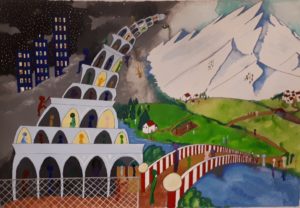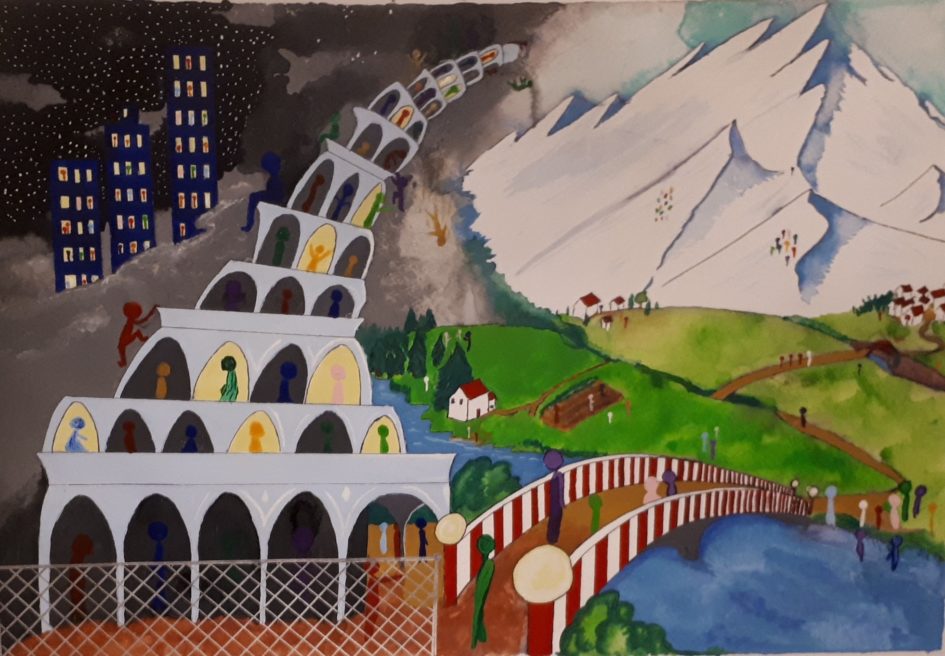Becoming a teacher is something that I think I’ve been working toward for most of my life, but I only realized it a few years ago. I remember the exact moment, sitting in my car, having just moved back to my hometown, but feeling like a stranger. I was praying for clarity and direction, thinking about the places my life had taken me, without me seeming to have been in control. This was something I wanted to change. I decided it was time for me to take responsibility for my path. Through continued soul searching, I realized that in every career I’d ever had, I ended up teaching something and I enjoyed the feeling of helping others to be successful. I thought that if I could become a teacher in the school system, I could spread that feeling and help young people to understand that they can be successful much earlier than I, myself, came to the realization. The road from that point to being in the UNBC Education Program was bumpy, but also full of miracles and personal growth.
Many aspects of EDUC 394 provoked my thinking, but I think the most profound has been the emphasis on place-based learning and the idea that movement increases brain activity. I loved the ‘Walking Curriculum’ activity during orientation so much that I bought Gillian Judson’s book to learn more. I’ve been trying out some of the activities with my own kids and hope to incorporate some of it into future practicums to test it out in class settings. However, the ideas of movement and place-based learning are still new to me so I would like to learn more about these concepts before I actually try to implement them. Additionally, investigating the guiding documents of teaching, including the Professional Standards for BC Educators, First Peoples Principles of Learning, BCTF Code of Ethics, along with the BC Curriculum and the processes of Lesson Planning and Learning Progressions was extremely helpful. I had heard of most of these before in my stint as an on-call teacher, but had never had the chance to really examine what they mean, and just as importantly, what they mean to me and my practice.
Other Block 1 courses also challenged my thinking, and the interconnectivity of it all was fantastic. Finding and creating a personal pedagogical statement in 393 was more beneficial to understanding where I come from as a teacher and what I want my practice to look like than I could have imagined. The Indigenous element of all the courses was surprising at first and not just a little bit scary, but I am also surprised by the level of comfort that has already developed through building familiarity. The research and projects in 346/446 were eye-opening in regard to the plight of Indigenous students and the importance of uplifting them. Through immersing this aspect in all areas of the program so far, it truly models what we are supposed to be doing as future teachers in ways that I had not previously experienced in schools. Even in practicum, though Indigenous teaching elements have been visible, I have not seen the level of imbedding of First People’s Ways of Knowing and Being that has developed in my mind as the standard set out by the UNBC course instructors.
Due to the high level of FPPL integration in the program, I feel that this will likely be a strength of my future teaching practice. My other strengths include dedication and love of learning. I value creativity and open-mindedness, and have a great deal of empathy for young people. I am forgiving and love to see them succeed, and I can recognize different aspects of success. I believe in the ability and potential of students and will work toward helping them to believe in themselves.
I still wonder about more ways to incorporate place-based learning, and the funding that goes with some of the bigger projects. How does a teacher access funding, and where does it come from? One of my major concerns is how I will get funding for some class activities and more immersive learning opportunities. I want my students to be able to learn by doing, so my guiding question for the upcoming blocks will be: How can I incorporate Montessori and Reggio-inspired philosophies in a middle or high school setting? I’m looking forward to learning more about this and my other questions in the coming blocks and my future years as a teacher.
The accompanying painting shows much of my learning in this first block of the UNBC Bachelor of Education Program.

Shifting Perspectives in Teaching and Learning
painting by Jenny Simpson
The way that I used to view schools, when I was a student myself, and how I think a lot of students see the education system: as a dark, prison-like institution where we have to do what other people tell us until we are old enough to be free, is depicted on the left side of the painting. The tower depicts the hierarchical structure and power dynamics within a flawed system, where some students succeed and are climbing the tower or resting easily, but others are falling off. In contrast, the right side shows my shift in thinking to what I believe schools can be. With place-based learning and the new curriculum, educations seems to be moving in a direction of freedom and enlightenment for all students, not just the ones that will achieve post-secondary. There is empowerment for teachers, staff members, and learners in this new way of viewing education.

Leave a Reply